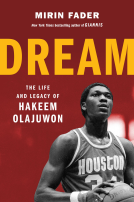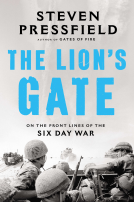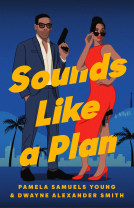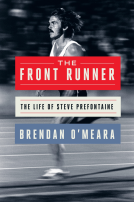
One Nation Under Baseball
How the 1960s Collided with the National Pastime
by John Florio; Ouisie Shapiro
This title was previously available on NetGalley and is now archived.
Send NetGalley books directly to your Kindle or Kindle app
1
To read on a Kindle or Kindle app, please add kindle@netgalley.com as an approved email address to receive files in your Amazon account. Click here for step-by-step instructions.
2
Also find your Kindle email address within your Amazon account, and enter it here.
Pub Date Apr 01 2017 | Archive Date Apr 30 2017
Description
One Nation Under Baseball highlights the intersection between American society and America’s pastime during the 1960s, when the hallmarks of the sport—fairness, competition, and mythology—came under scrutiny. John Florio and Ouisie Shapiro examine the events of the era that reshaped the game: the Koufax and Drysdale million-dollar holdout, the encroachment of television on newspaper coverage, the changing perception of ballplayers from mythic figures to overgrown boys, the arrival of the everyman Mets and their free-spirited fans, and the lawsuit brought against team owners by Curt Flood.
One Nation Under Baseball brings to life the seminal figures of the era—including Bob Gibson, Marvin Miller, Tom Seaver, and Dick Young—richly portraying their roles during a decade of flux and uncertainty.
Advance Praise
“An important inside historical account of baseball’s awakening amid the social change in America in the ’60s. Florio and Shapiro cover it all in riveting and incisive fashion, from the press box to the baseball boardrooms, the clubhouse, and the courthouse.”—Bill Madden, Hall of Fame baseball writer
“One great story after another. Mickey Mantle. Muhammad Ali. Sandy Koufax and Don Drysdale. Martin Luther King. The moon landing. Ladies and gentlemen, your attention please!”—Jim Bouton, author of Ball Four
Available Editions
| EDITION | Other Format |
| ISBN | 9780803286900 |
| PRICE | $29.95 (USD) |
| PAGES | 256 |
Featured Reviews
 Andy L, Reviewer
Andy L, Reviewer
I enjoy this type of book where the events in baseball are juxtaposed over what is happening in the rest of the world. This book concentrates on the 1960’s, and era in which both baseball and the US went through serious changes.
=== The Good Stuff ===
* John Florio and Ouisie Shapiro write well, and the book was fun to read. While some of the events described, particularly the ones involving racial discrimination, are a bit nasty, the book keeps it light tone, and the pages continue to fly by.
* Florio and Shapiro tackle a lot of topics, including the rise of the Mets, the rise of television journalism at the expense of newspapers, and the gradual reversal of racial discrimination both in baseball and the country in general. There are few pure “baseball” stories in the book, and you will not learn anything about how to throw a fastball.
* There were quite a few stories I had never read anywhere else. For example, I never realized that the Beatles and Muhammed Ali had met, nor that they had managed to use each other to help generate publicity. There is a great story of Vic Power, a Puerto Rican player in the Yankees farm system, who is arrested in Kansas City for jaywalking. He notifies the judge that he thought the “Don’t Walk” sign only applied to whites. There is no word on if his strategy worked.
* The book does have both positive and negative outcome stories. One of the happiest is the changes made in Atlanta as the Braves move into town. While perhaps not a direct result, the authors make the case that the integration of the new baseball stadium drove a change in attitude within the city itself. For many in the South, a baseball game was the first integrated event they attended.
=== The Not-So-Good Stuff ===
* Many things happened in the 1960’s, and you can almost feel the authors struggling over what to include and what to ignore. If I had written the book, I might have made some different tradeoffs, but since I didn’t, I will rely on Florio and Shapiro’s choices.
* My biggest disappointment with the book is that the authors stick to reciting events rather than analyzing these events and how they built upon each other. For example, the story of how Atlanta became a more integrated and racially tolerant city, in part, because of the integrated policies of the new baseball stadium, was an excellent observation. However this was more the exception rather than the rule of the book, and I would have loved to see more analysis of this type.
=== Summary ===
I enjoyed the book, and found it to be a fun read. I always have a hard time believing that some of the events described in this book happened in my lifetime, although it is encouraging seeing the progress that was made.
There are plenty of amusing little anecdotes scattered throughout the book, such as newspaperman Dick Young screaming profanities during the “live” locker-room interviews of his hated television rivals. While a source of humor, these tales also give a feel of the very real rivalry between the old print journalists and the new television guys.
Any fan of modern American history, whether a baseball fan or not, would probably enjoy the book.
 Michael G, Reviewer
Michael G, Reviewer
One Nation Under Baseball is a fairly quick read that talks about how the 1960’s impacted baseball and dare I say how baseball impacted the 1960’s. Like everything else baseball could not escape the tumultuous 1960’s unaltered. This book tries to cover the most momentous development such as the proceeding of integration into Major League Baseball, the move into a more player control model through free agency, to the rise of a new generation of press core that looked for the new angle rather than the output. Given its relatively short size, I’m not sure that the hardcore baseball fan will be satisfied with the coverage, but I think it’s a great primer for someone who maybe hasn’t considered the relationship between the 1960s and baseball.
 Matthew L, Reviewer
Matthew L, Reviewer
Sports are seen by many people as escape from the real-world and any social and political issues that might exist therein. And while a day at the ballpark can be an immersive experience, the game is shaped by (and occasionally shapes) societal forces. Perhaps no decade demonstrates the particular connection between baseball and American history better than the 1960's, which was a transformational time for both sectors. In One Nation Under Baseball, John Florio and Ouisie Shapiro present a readable and insightful look at this intersection.
The notion that "sports are divorced from politics" is a bit unbelievable in this day and age (and the same largely held true 60 years ago). Rather than beat down on this strawman, Florio and Shapiro chronicle the political and cultural forces that shaped baseball during the 60's, taking the connection as a given and looking instead at how these forces impacted the game. One Nation Under Baseball touches on the major subjects of the period, including integration and civil rights, the elimination of the reserve clause and embiggening of the player's union, and the Vietnam War and the rise of the counter-culture. Each movement is placed in its proper historical context, though sometimes I felt the authors went into too much detail describing some basic information about events such as the March on Washington and suburbanization of America. The reader is likely already pretty familiar with those events and the authors didn't tread upon any new territory. The book does shine in linking baseball to these shifts, such as Hank Aaron's account of listening to restaurant workers smashing the dinnerware he just had eaten on because none of the restaurant's patrons wanted to eat off the plate of a black person.
The book reads like a documentary film (which isn't surprising given that co-author Shapiro has worked on a handful of them), frequently relying on extended passages of quotes from interviews as well as primary source materials. Everything on baseball is well-researched and the book is greatly enriched by drawing from these sources.
One Nation Under Baseball especially shines when discussing the evolution of baseball media. The 1960's marked a transitional time for newspaper writers. Impacted tremendously by the rise of television and an extended newspaper strike in New York, a new generation of writers called "chipmunks" realized that they needed to shift their approach. Now that fans could figure out who won through watching the news, these new scribes (including George Vecsey of The New York Times and Larry Merchant of The Philadelphia Daily News) focused instead on more long-form articles that provided details on the players' personalities and offered deeper analysis. Also benefiting from primarily writing for afternoon papers with later deadlines, these writers really leveraged their access to players and managers and presented a unique perspective that other mediums couldn't match at the time. The decade also saw the first real efforts of some players to pull back the curtain of big-league life and expose the life of a player, warts and all (but especially the warts) to the general public. This reached a fever pitch(er) with the publication of Jim Bouton's diary of his 1969 season, Ball Four, with its tales of beaver-hunting, drinking, and other sordid affairs (at least to his early-70's audience that hadn't yet been desensitized to athletic indiscretions through exposure to countless incriminating athletic Instagram selfies). The old-guard sportswriters of Dick Young and Jimmy Cannon adhered to a code that generally protected players from such scrutiny, and the 1960's marked the start of a movement of player exposure that would only get more and more intimate (see previous parenthetical statement about incriminating Instagram selfies) as time went on.
Overall, One Nation Under Baseball was a quality read that is worth seeking out for anyone fitting into the Venn diagram intersection of being interested in baseball and history. This is the second baseball-related book I've read from University of Nebraska Press this year and both were considerably entertaining and light reads. Definitely seek this out if the premise sounds intriguing to you.
7 / 10
 Budd B, Media/Journalist
Budd B, Media/Journalist
Now, here's an interesting subject.
You have have heard that America sort of blew up in the 1960s in any number of ways. All sorts of changes came to the country, and they were packed into the decade. It was hard to keep up with the way the rules seemed to change by the hour.
In contract, the game of baseball remained relatively unchanged. People who had come from 1895 in a time machine still would have recognized it in 1965 - nine innings, three outs, and so on.
For some, that was good. They could go to the ballpark and see decades of tradition on display. Heck, most of the players weren't allowed to wear long hair, so every day was turn back the clock day in that sense.
But there were all sorts of changes taking place in the game, even if they might have been relatively subtle. Looking at the decade in that sense is the premise of "One Nation Under Baseball."
After an excellent introduction by Bob Costas about how important and interesting those changes were, authors John Florio and Ouisie Shapiro jump right into a fascinating anecdote from pitcher Jim Grant. He was in Detroit in 1960 on a road trip when he got a call from aides of Senator John F. Kennedy, telling him that the Presidential nominee wanted to have breakfast with him the next morning. It took some convincing, but Grant did make it down to the hotel restaurant for breakfast. The two men had a frank conversation about civil rights, and Grant was impressed that Kennedy bothered to seek him out.
And away we go through the 1960s,, covering a variety of topics and presenting some stories. Some are familiar, but several are pretty fresh because of interviews done just for the book - even from the perspective of about 50 years later. That helps make it at least interesting.
Even so, this bogs down a bit in relatively short order. The baseball stories will at least interest those picking it up, but the book goes in a variety of other directions. Before we know it, we're reading about a New York City newspaper strike, or the Beatles, or Muhammad Ali, or New York major John Lindsay. In addition, some times the stories don't match the overall theme of changes in society changing baseball. There's a portion of the book on the 1969 New York Mets, who pulled off one of the great surprises in baseball history by coming from nowhere to win a World Series. Forests have been sacrificed to tell that story, but it doesn't seem like a particularly good fit in this book. Denny McLain's 31-win season gets a look here, but it's hard to figure out where that fits in with the narrative. At least we can guess why he never came close to repeating that big season (arm issues were bothering him by the end of 1968).
What's more, I'm not sure all of the anecdotes go anywhere. We see how the road to free agency started, and how the sport became more color-blind, but there isn't much analysis given along the way. I would guess that most people picking this up might not want to read a sociologist's view of baseball, but this went a little too far in the other direction. Even a final chapter summing up what had happened would have been good.
The bibliography here is very impressive, and it's almost surprising that the authors got this down to only 200 or so pages of text. "One Nation Under Baseball" will at least interest those who want to learn more about the Sixties, but they might be disappointed that there's not more to the story.
 Kyle E, Reviewer
Kyle E, Reviewer
This is a book which the "stick to sports" crowd will hate, but certainly should read to gain some perspective. Baseball and all sports are a form of escape for us the fan, but at the same time, baseball is a job, a glimpse at the society in which we all reside, influenced heavily by the outside world and a focal point for change. What is going on off the field affects what is going on on the field. The social and political climate do have an influence on the game and its players, and as such, this influence should be addressed.
The authors did an amazing job of layering baseball with society and the several momentous events occurring across the country in the 1960's. The Civil Rights Movement, the assassination of John F. Kennedy, Robert F. Kennedy, and Martin Luther King, Jr., landing on the moon, the Vietnam War, presidential elections, baseball economics and the western expansion of baseball are just a few of the many events of the 1960's which shaped how baseball was played and perceived. In fact, if you were to pick up a history book covering the United States during this time period, there would be very few events in the history book which was not at least casually addressed in this book, and this inclusion only heightened the authors' abilities to demonstrate their point.
For the pure baseball nerd, there is still plenty of stats and game action to whet their appetite, these events are presented in a more complex and meaningful manner. Some of baseball's biggest stars are covered in this book, and each one has a unique response to society in the 1960's. From Sandy Koufax becoming a Jewish hero to Bob Gibson's personal vendetta towards the assassination of MLK and RFK, to Hank Aaron altering his approach at the plate to appease the racist fans in the south, each player is examined and presented as they were shaped by the world. This book did not just focus on one event of the decade, but rather was an exploration of the totality of the decade and how each individual event intertwined with baseball and its stars, altering society and the sport along the way.
No matter what time frame or era is mentioned, one can usually find a connection to baseball and the political and social culture of the times. That was especially true in the 1960’s and how they intertwine is illustrated in this book by John Florio and Ouisie Shapiro.
Most of the important social issues and important events of the decade and are
mentioned and their connections to baseball are documented as well. There is the
moon landing by the Apollo 11 crew in 1969 – and baseball games were paused to
announce the landing generating cheers and tears from fans. The connection between
the New York Mets and the Beatles was mentioned - or more appropriately, a certain
Mets employee who served the Beatles at their historic Shea Stadium concert.
The most compelling writing for both society and baseball was saved for the topic of race relations. One of the more poignant stories was shared by Atlanta Braves slugger Henry Aaron when he talked about hearing dishes breaking in a restaurant where he ate a meal. He stated that it was the belief of the owner that no future customers would want to eat off of the same plate from which a black man ate, so the workers were told to break the dishes instead of wash them. There is detailed writing about the important events on this issue such as the March on Washington as well as rioting across the country.
The same attention to detail is paid to baseball issues of the decade and how they connect to the political and social fabric of the country as well. Topics that are covered in this manner include the unionization of the players by Marvin Miller, the publication of “Ball Four” and the portrayal of the game and the challenge to baseball’s reserve clause by Curt Flood. There is also detailed writing about the change in how sports were covered by newspaper writers, in which the stories and questions asked were not always flattering to the players or teams. These reporters, called “chipmunks”, were the writers who revolutionized the way baseball was covered.
At times the book reads more like a history lesson about the 1960’s instead of a baseball book – and that makes it an even better book to read if one is truly interested in how the game is connected to the American mood. This is recommend for those who like reading history books, whether that history is about baseball or about America.
I wish to thank University of Nebraska Press for providing a copy of the book in exchange for an honest review.
 Greville W, Reviewer
Greville W, Reviewer
I love social histories linked to sport and this is an excellent overview of the 1960s in America linked to what has going on in baseball at the time. Broadly researched and extremely well written this is a veritable page turner for any sports nut and budding social historian. Thorough, comprehensive and thought provoking. An exceptionally good read,
 Seth L, Educator
Seth L, Educator
This is a great read with powerful insights into how the game evolved - or not - through turbulent times
 Jeff F, Media/Journalist
Jeff F, Media/Journalist
A great read, diving into the tumultuous 1960s and its impact on the baseball diamond and beyond.
 Pat L, Reviewer
Pat L, Reviewer
A look at how baseball and the sixties collided together. I did not see that much of it growing up because as a kid we only got a little bit of information and small amounts of games on T.V. The protests I saw were about the war and the newspaper did not talk about the ball players. A good book looking back.
Readers who liked this book also liked:
Pamela Samuels Young; Dwayne Alexander Smith
Multicultural Interest, Mystery & Thrillers, Romance
Silvia Moreno-Garcia
Historical Fiction, Literary Fiction, Sci Fi & Fantasy

















